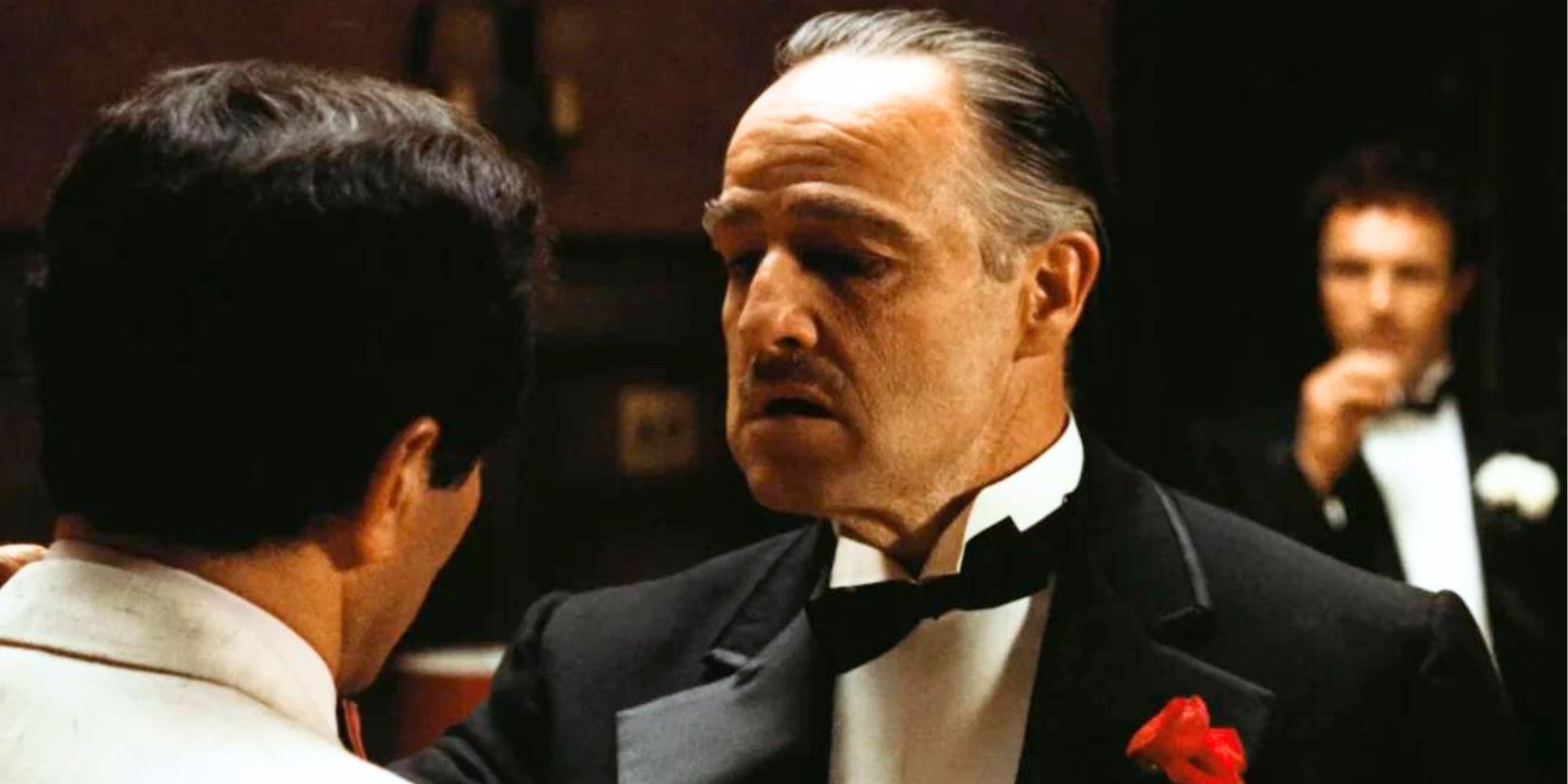The Big Picture
- Due to his low opinion of the novel’s commercial background, Francis Ford Coppola originally declined to direct
The Godfather. - Complications, including issues finding a director, disagreements with the studio, and reservations from the real mafia, delayed the production.
- In the end,
The Godfather
‘s principal photography took 77 grueling days and caused Coppola a lot of grief.
It is hardly news to movie fans that the making of Francis Ford Coppola‘s masterpiece The Godfather, adapted from Mario Puzo‘s best-selling novel, was nothing short of tumultuous. The film’s production faced a myriad of challenges from the very beginning. When first approached to direct the film, Coppola declined the offer because he found the book underwhelming, terming it a fictional story written for commercial purposes. In a report by CBS Sunday Morning, Coppola said he ironically decided to take up the role after his work partner, George Lucas, convinced him they needed the money to pay debts. American Zoetrope, Coppola’s company, owed Warner Bros. for financing Lucas’ movie THX 1138. Lucas proved essential in The Godfather‘s production, helping Coppola with important creative decisions. After choosing Coppola to direct the film, Paramount Pictures faced internal and external skepticism, which marked the beginning of an arduous journey in making what has become one of the best movies ever. So, just how long did it take to film The Godfather?
‘The Godfather’s Pre-Production Was Marked With Time-Consuming Drama
To satisfactorily address the duration it took to film The Godfather, we must understand the process straight from its conception. As per The New Yorker, this journey began in 1967 when Mario Puzo was still writing the manuscript for his bestselling book. With just a couple of pages, Paramount Pictures was interested. Robert “Bob” Evans, the then chief of production at Paramount, offered the gambling-debt-plugged Puzo a deal he could not refuse. The book’s success in 1969 sped up the actualization of the movie. Evans approached several directors, including Costa-Gavras, Peter Yates (Bullitt), and Franklin J. Schaffner (Patton), but they all turned down the offer. Deciding to settle on Italian-Americans all the way, the studio approached Coppola, who, like those before him, at first spurned it before changing his mind. Coppola’s nod marked the beginning of one of his most troubling productions in his sprawling career.
Apart from finding a way of converting Puzo’s book into a screenplay (they co-wrote the script over a year), Coppola’s first headache was convincing Paramount that he was the right man for the job. His artistic vision for the film clashed with the executives. For a start, Coppola saw the film as a 1940s period movie, as opposed to the contemporary feel in the book. He also wanted it shot in actual locations, not in a studio. These demands meant a steeper budget for the financially struggling studio whose previous gangster film The Brotherhood, starring Kirk Douglas, had ingloriously bombed. Coppola’s preferred cast — Marlon Brando, Al Pacino, Robert Duvall, Diane Keaton — compounded his situation with the executives. Reportedly, he melodramatically “fainted” when one of the executives told him in no uncertain terms that Brando would never appear in the picture. There was also a matter involving the real Mafia, whose reservations about the film had to be dealt with. Finally, the studio made concessions that allowed Coppola to have his way. With the screenplay ready and the important roles filled (several smaller roles like Luca Brasi were cast later), principal photography was next. Filming was scheduled to officially begin on March 29, 1971, the same day the final screenplay was completed.
‘The Godfather’s Filming Was On Schedule
On paper, The Godfather‘s principal photography took 77 days,officially completed on August 6, 1971, six days short of the 83 budgeted for. The film’s shooting schedule might suggest a leisurely stroll through a park, but the reality was a grueling marathon. Filming in the U.S. primarily occurred in New York City (including its boroughs) and California. During shooting, Coppola was often lonely on set, with each day seeming like his last on the project. “I don’t take a lot of pleasure in anything to do with The Godfather. I love the cast, and I think the film definitely brought out something, but it was a terrible period in my life.” Coppola says in The New Yorker. The filming took a toll on him so much that it is reported Martin Scorsese once found him crying while visiting the set. Coppola found some happiness in the quiet of shooting the Sicilian scenes in Italy’s villages of Forza d’Agrò and Savoca.
Despite the setbacks, there were some intriguing moments on the film’s set that inadvertently helped save time. According to Robert Duvall in the CBS report, Brando, for instance, read his lines from a cue sheet perched on a tree in the garden scene with Al Pacino (the scene was written by Robert Towne, who is not credited). Another brilliant scene is the unintended Luca Brasi’s stuttered speech for Don Corleone, which Coppola ingeniously decided to use in the film instead of “wasting time” trying to have Lenny Montana deliver as had been required.
The Godfather‘s post-production was also a fairly happy time for Coppola. He set up a tent in his San Francisco offices. However, after presenting his cut to Bob Evans, the Paramount executive ordered Coppola to transfer the post-production to L.A. Evans was dissatisfied with the shortened film’s length, which Coppola had reportedly deliberately done to fit into the studio’s acceptable length. After over two years of crafting a masterpiece and 77 days of principal photography, the iconic film The Godfather was ready for exhibition in January 1972. The Godfather‘s longevity and impact defend its arduous making process.
The Godfather is streaming on Paramount+ in the U.S.
Watch on Paramout+

